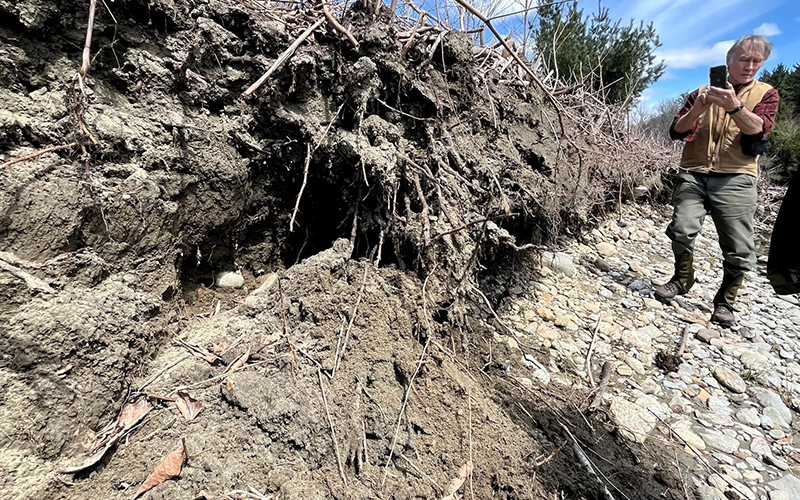Last week seven Valley residents took a short course offered by the Native Plant Trust on Japanese knotweed taught by invasive species ecologist Brian Colleran. The course was brought to The Valley by the Warren and Waitsfield Conservation Commissions. On Saturday, April 30, the course took participants to two locations -- Lareau Swim Hole and the Austin Parcel.
“What we learned was quite eye-opening and explains the specific dynamics behind the spread of knotweed along river courses,” Waitsfield Conservation Commission chair Curt Lindberg said.
“As knotweed replaces native plantings along rivers and streams the underground root structure loses its structural complexity and eliminates the natural variety of root depths and becomes dominated by knotweed with its simplified and shallow root rhizome structure. This lessens a streambank’s ability to hold soil. High water and flood events then scour streambanks of soil and lead to under-bank erosion, bank failure, and the breakoff of knotweed rhizomes segments (called rhizomatous propagules). This sends significant sediment downstream along with knotweed propagules downstream to infest new locations. This then sets up a vicious cycle. More knotweed, more streambank collapse,” he explained.
"Brian’s understanding of Japanese knotweed, from both a botanical and plant physiology perspective, especially as it relates to our efforts to manage and control the spread of this invasive, was informative and insightful. A "big picture" view, which is so helpful when much of our work is on our knees digging in the dirt,” said Warren Conservation Commission chair and weekend participant Jito Coleman.
The Waitsfield Conservation Commission was offering a knotweed orientation and planning on May 4 as The Valley Reporter went to press and is offering a second one on Saturday, May 7, at the Lareau Swim Hole from 10 to 11 a.m.
Both sessions will cover the various ways volunteers can contribute to knotweed eradication and management project; how Japanese knotweed spreads and the damage it does to nature; and the manual techniques people will be using to manage knotweed along sections of the river and eradicate it along some upper roadways. Anyone attending Saturday should bring some gloves as they will be digging out some knotweed crowns and pulling young stalks.
Those wishing to attend either of both sessions are asked to email Curt Lindberg at












